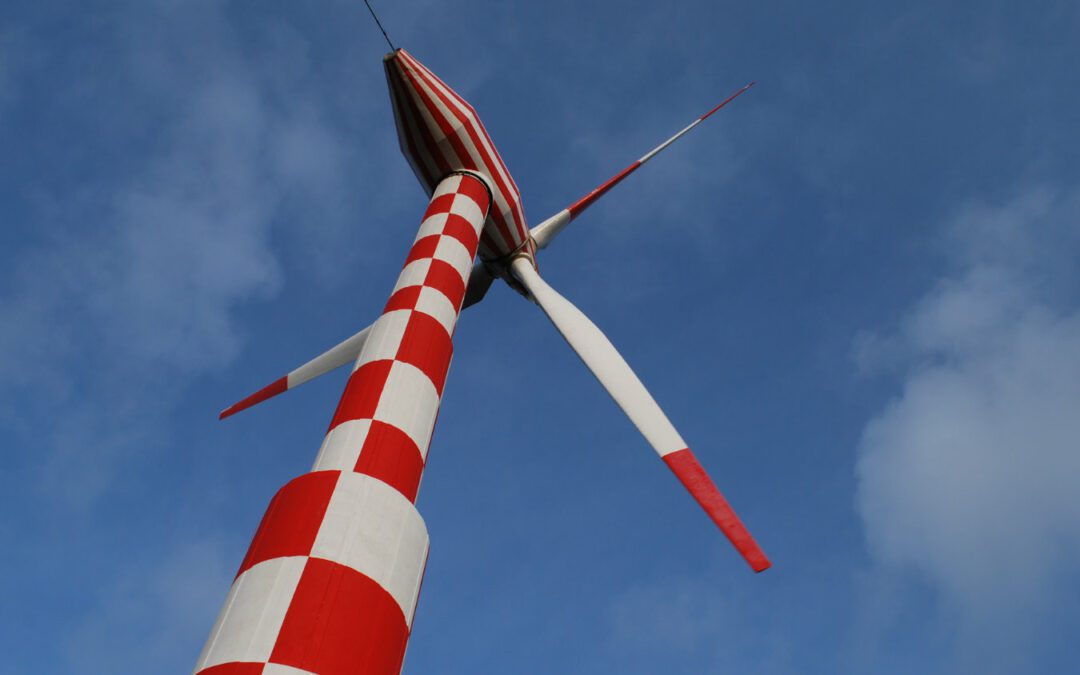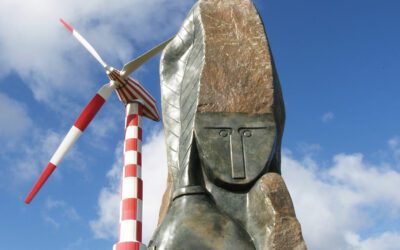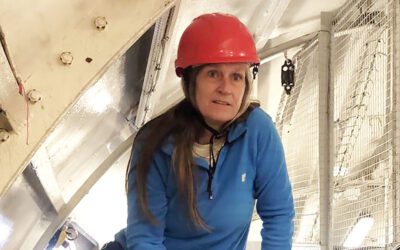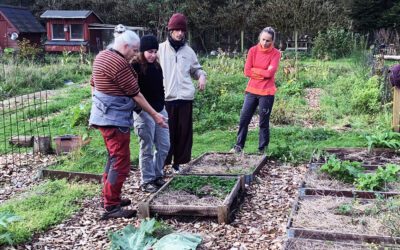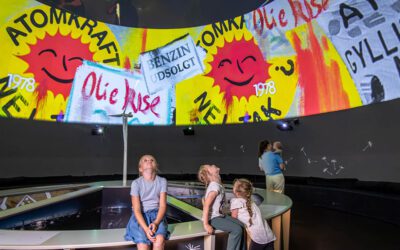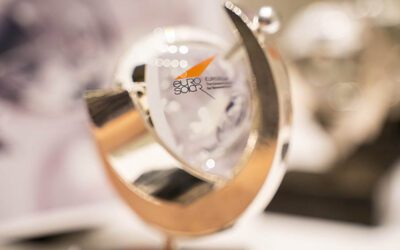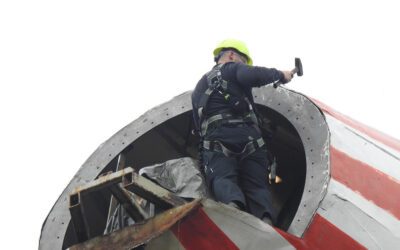Tvindkraft’s present role
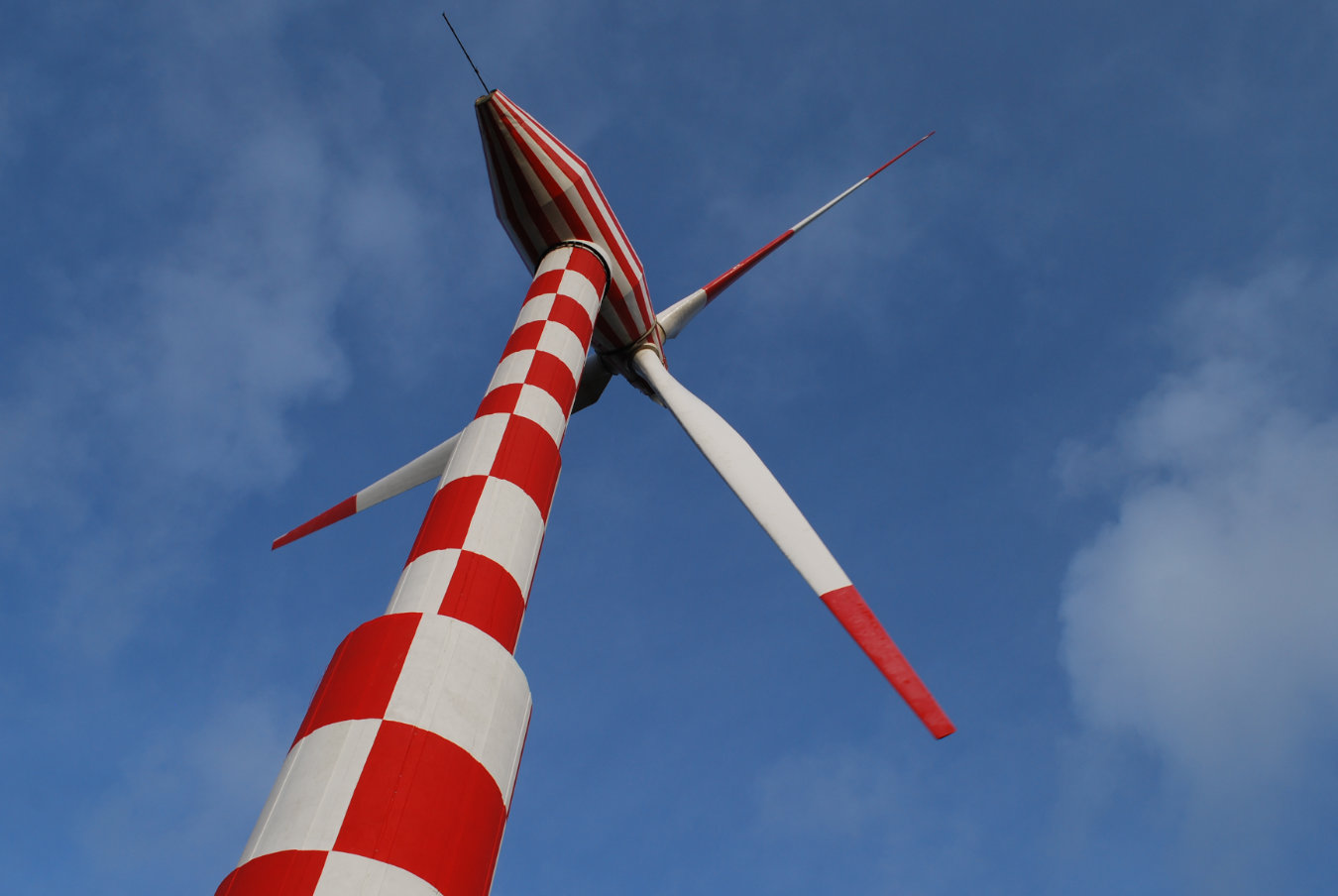
What do our windmill keepers think about Tvindkraft, wind energy, windmills in Denmark and the environmental crisis? Britta, who has been looking after the windmill for over 20 years, was asked for her thoughts on these complex and current issues. What has she learned from her experience in the windmill industry? What does she think about the future of wind energy and the environmental crisis? And what role does Tvindkraft have today in relation to these issues?
Can you tell a bit about yourself, and how you came to be a windmill caretaker?
I arrived in Tvind in 1974 as a student at the Traveling Folk High School and soon left for an Asian study tour. The windmill was being built when I returned. I did not want to leave the place, and I was lucky to find a job in the “Tvindkraft guest group.” My job was to make sure that everyone who came to see the construction site was welcomed, got a lot of information, and had some good coffee.
I then taught for several years in Tvind before becoming a windmill caretaker in 1999. That was because, at the time, my understanding of the need for renewable energy became more acute – I realised that we needed to look in new and different directions for energy production, and I wanted to be a part of that effort. That was also the time when the scientific press began to seriously discuss global warming and climate change.
What does it mean to be a windmill caretaker?
In a nutshell, it means keeping the windmill in good working order. It entails providing information and greeting all visitors to the windmill. I’ve also been doing bookkeeping and security documentation for the windmill. It’s a variety of tasks in general. Initially, I was physically assisting with Tvindkraft’s maintenance – until I couldn’t anymore. But by then, I had become acquainted with all of the windmill’s elements and parts, and I was able to participate in the problem-solving. There are always a lot of problems to solve at Tvindkraft. It is a pioneer wind turbine, a prototype, which distinguishes it: whenever anything needs to be maintained, replaced, or developed, we must pool our resources to come up with very creative solutions.
Over the years, we have received increasing support from the “big wind” industry and its respective support industries. You may be aware that Tvindkraft was the world’s largest windmill for a long time. When I started working here in 1999, the other commercial wind companies had grown to the same size as Tvindkraft. That meant we could suddenly share ideas, technology, and information with more partners. We could call colleagues from other companies and ask, “What are you doing?” when we had a problem. Many people in the wind industry have supported Tvindkraft and continue to support us. Of course, that is something for which we are extremely grateful. And they do it because they recognise this windmill as the “mother windmill” – and it is still operational.
Throughout the years you have worked for Tvindkraft, have you had the chance to learn about wind power?
Although I am not a technical expert in any way, I have learned a lot from first-hand experience and from the many knowledgeable visitors we receive each year. I’ve learned a lot about bolts and bearings, hydraulic systems, and blades through my work with Tvindkraft, but there’s a limit to how much I can understand the technology when it comes down to the details. I understand when it’s hands-on and when I’m involved in problem-solving.
Other windmill companies’ visitors also taught me a lot. Wind energy is a rapidly expanding industry. According to some of Vesta’s colleagues, there is always enough wind in Europe to meet the entire continent’s electricity needs. This means that you can install wind turbines in so many locations across Europe that there is always enough wind to cover all of our electricity needs. According to other guests, wind power is at the forefront of the transition to renewable energy. It is inexpensive and widely available throughout the world. This being said, it is clear that it cannot stand alone in the ecological transition.
Is wind power a possible answer to the environmental crisis?
Although wind power is an important industry, it is not a panacea for the environmental crisis. The crisis must be approached from all angles and in a comprehensive manner.
When it comes to the transition to renewable energy, each country must look at itself and ask: What resources are available here? Iceland has 100% renewable energy from hydro and geothermal power, while Norway has nearly 100% renewable electricity, primarily from hydropower. They have geysers and lakes: these are natural wonders. In my opinion, the more local you go, the safer your system is: sadly, this is what the war in Ukraine taught us. While some transportation and exchange will be required, we must become far less interdependent than we are now.
So, are we going in the right direction?
I believe we are moving far too slowly. Denmark could have achieved 100% renewable energy long ago if not for political opposition. It’s disheartening to see that the country that gave birth to the wind industry is not far ahead of some poorer Eastern European countries, which have worked very hard to get to where they are today in terms of sustainability. Personally, I believe we need to ask ourselves why we haven’t made any progress.
You mentioned political resistance might have played a role in the slow transition to renewable energy. So, what else is needed to tackle the environmental crisis effectively?
I believe we should educate people about it. The Danish people are well-informed about climate change, and the majority of us believe that more wind power should be installed. However, it is difficult to effect change when wind systems are owned by large investors and do not directly benefit the local people. This is true for the majority of wind turbines in Denmark, and, to a lesser extent, around the world. Local ownership is, in my opinion, a critical concept when discussing the transition to renewable energy.
What’s in the future of the wind industry?
The wind industry, like any other, is becoming increasingly centralised and monopolised. Fortunately, there is some good news: a law has been passed in Denmark that allows people to form local energy communities, known as “energifaelleskabet” in Danish – Energy Commons. One has just begun in our backyard, in Staby, Husby, and Veders, to name a few nearby villages.
The first meeting to establish their first community power company has now taken place. This means that they will collaborate to develop a concept of locally owned energy production: wind, solar, and possibly storage. This is a fantastic opportunity for people to help accelerate the transition to renewable energy, which is critical right now.
Is there anything else that you would like to add?
I believe it is always appropriate for me to state that when Tvindkraft was built, it served as a beacon for others to follow. It was critical that we built Tvindkraft to be as large as possible so that people could see: “This is a real alternative, this is serious, this is a lot of power.” A small windmill in your backyard may go unnoticed, but no one can come to Tvind and say, “Oh, there was a windmill there?” “I didn’t notice it.”
Building it as large as we did and keeping it running today is still a powerful statement that when people come together and are passionate about something, they can accomplish the impossible. And now, with energy wars and an environmental crisis, we must do the impossible once more.
The wind industry, like any other, is becoming increasingly centralised and monopolised. Fortunately, there is some good news: a law has been passed in Denmark that allows people to form local energy communities. Here, they can collaborate to develop a concept of locally owned energy production: wind, solar, and possibly storage. This is a fantastic opportunity for people to help accelerate the transition to renewable energy, which is critical right now.
All of the technology developed for the Tvindkraft project was open source, allowing people to build their own wind turbines and generate their own electricity.
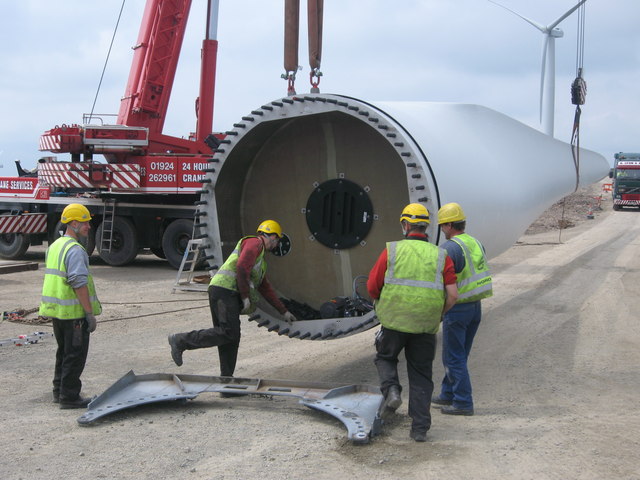
The wind energy sector employs over 1.1 million people worldwide, and this number is set to increase. The industry has boomed since wind turbines became commercially viable, which has steadily increased job creation over the years. Jobs are available for every stage of the wind power process, from manufacturing and installing turbines, to wind energy consultancy.
Source: The Renewable Energy Institute
WHAT ELSE
Tvind & the Global Goals
Tvind International School Centre works towards achieving the Sustainable Development Goals in many ways. You are welcome to join the Tvind Volunteer Team and advance the Tvind campus.
Inspiring the Future: European Energy at Tvindkraft
European Energy’s Birit Buhr visits the iconic Tvindkraft wind turbine, exploring the roots of Denmark’s renewable energy revolution.
A visit by the Nature Now team
The Nature Now team from DRH Lindersvold came to visit Tvind in the autumn of 2023. The team kindly shared this report about their experiences as visitors to the Tvindkraft and the Tvind Climate Centre.
Tvindkraft at Naturkraft
Naturkraft is an event park where you can learn about the forces of nature. Here, you can find a riveting exhibition chronicling the history of modern wind power in which Tvindkraft is showcased.
European Solar Prize Winner
In 2008, the schools in Tvind received the prestigious European Solar Prize in the “Education and vocational training” category for their “cutting-edge wind turbine as educational project”.
A new nacelle back-end
Since Tvindkraft has stood tall for almost five decades, it is always in need of repairing, revising, and rethinking. During the autumn of 2022, we got a brand new cone for the back-end of the nacelle to substitute the original, 45-year old piece.

